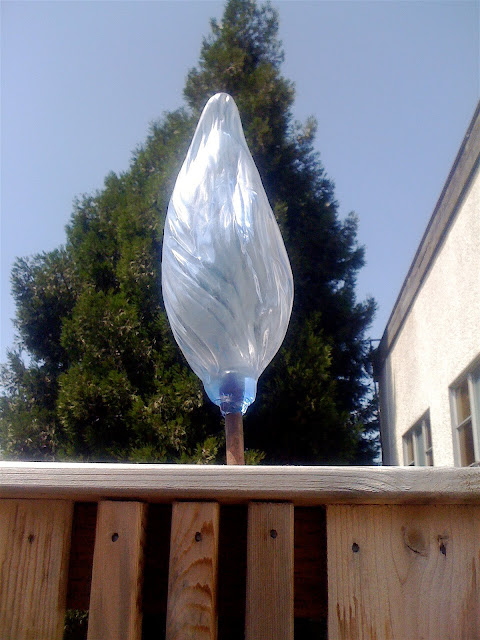
I've never watched the television program called
Hoarders, but I understand it's a rather painful realty show that looks at the personal tragedies of lives impacted by compulsive hoarding disorder (CHD). Each episode focuses on individuals who can't bear to part with even the tiniest of possessions and how those possessions, through their accumulation, have come to possess them, mind, body, and soul. I don't need to watch the program to understand the dangers of hoarding because I've seen it in real life, albeit on a smaller scale. I've even lived it at times, in my own way.
I think we all suffer from hoarding. Indeed, at times it appears that we've set up a society in which many of us engage in a sort of competitive hoarding. When I was a boy, we called it "keeping up with the Joneses," the social pressure to measure one's worth by how many precious things one owns, be it a bigger house, car, or boat. Most of us know better, of course, yet still all of us at one time or another have looked around at all the crap we have and thought, "It's time for a purge." But even those of us who manage to live minimally are indirectly made to suffer from CHD via the widespread misery it causes to those around us.
And indeed, as I've written before, the natural state of a hoarder is misery. I've never seen a joyful hoarder. That's why I'm always quick to point it out when I see it happening around the preschool. Just as I will note, aloud, that someone is crying because they've skinned their knee or bumped their head, I make sure to point out the misery of hoarding when I see it: no judgement, no scolding, just a calm statement of fact (e.g., "He's sad because he's hoarding all the blocks"). I want children to not only understand their own emotions, but also those of the people around them.
And this doesn't just go for stuff.
Last week I wrote about power. A lot of it comes my way by virtue of being a middle class, white, male, and a teacher to boot. As a citizen, my responsibility is to give it away, to not cling to my power, but to use it to empower others, because when one accumulates anything, it begins to stink, to become something to constantly curate and even protect, something that comes ultimately to posses the possessor. No, power, like stuff, is meant to
move, to lubricate, to be spread around like fertilizer, or it will make you and everyone around you miserable. In fact, just like with the poor people on
Hoarders, if you hoard too much of anything for too long it becomes fully toxic, even explosive.
I think most people who read here get that, and even as we all tend at times toward clutching things too tightly, we know we make the world a better place when we give it away.
But what about money? I mean, from the time we're toddlers, we're urged to save our pennies, to hide our cash in piggy banks, to hoard it against a rainy day. I'm certain that's how most of those TV hoarders feel about their own stashes of junk:
But what if I need it some day? Of course, it's only common sense to bank a little dough, to create a cushion, to plan for those years, whether near at hand or decades away, when money isn't coming our way, but is that a truth about life or just a truth about how we, as a society, have opted to live it?
I've had four different billionaires near enough to me over my 55 years that I feel like I've had the chance to take a superficial measure of them, two were self-made while two inherited their great wealth. In each case, I walked away with a sense of their misery. None of them, at least when they were around me, seemed particularly happy, indeed, as a collection they came off as irritable, demanding, and even a bit sad, the natural state of someone who is hoarding. I, for one, would not wish that sort of wealth on anyone and should that sort of excess come my way, I hope that I would have the strength of character to dis-possess myself before it came to possess me. No, like power, our responsibility is not to cling to money, but rather to give it away, to spend it, to spread it around, to allow it to do its job of lubricating. I'm not saying I always do it, but I know it's true.
For the past few days I've been imagining a world in which we truly understood the personal a societal damage done by hoarding of all kinds. Of course, we can see it when shown to us through people whose CHD leads them to accumulate festering piles of garbage, but the hurt hoarding causes is no less real, and perhaps even more painful, when it comes to things like power and money.
No, it's our job to spread it around. All of it. I mean, look no farther than our reason for living -- love. If we hoard it, it does no good. Love only has value when we spread it around and that's true for everything else as well.